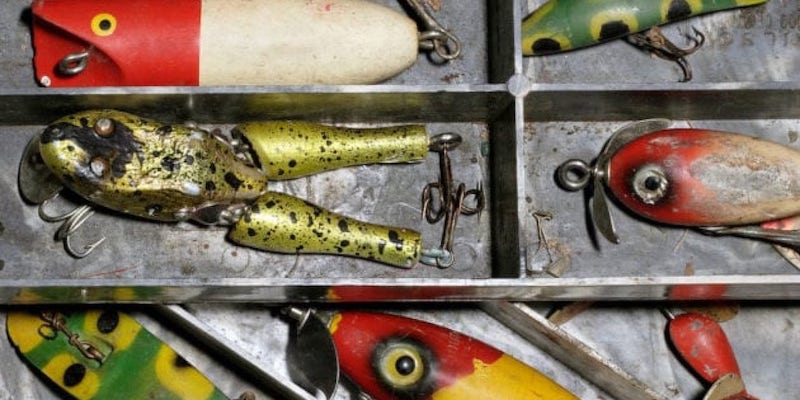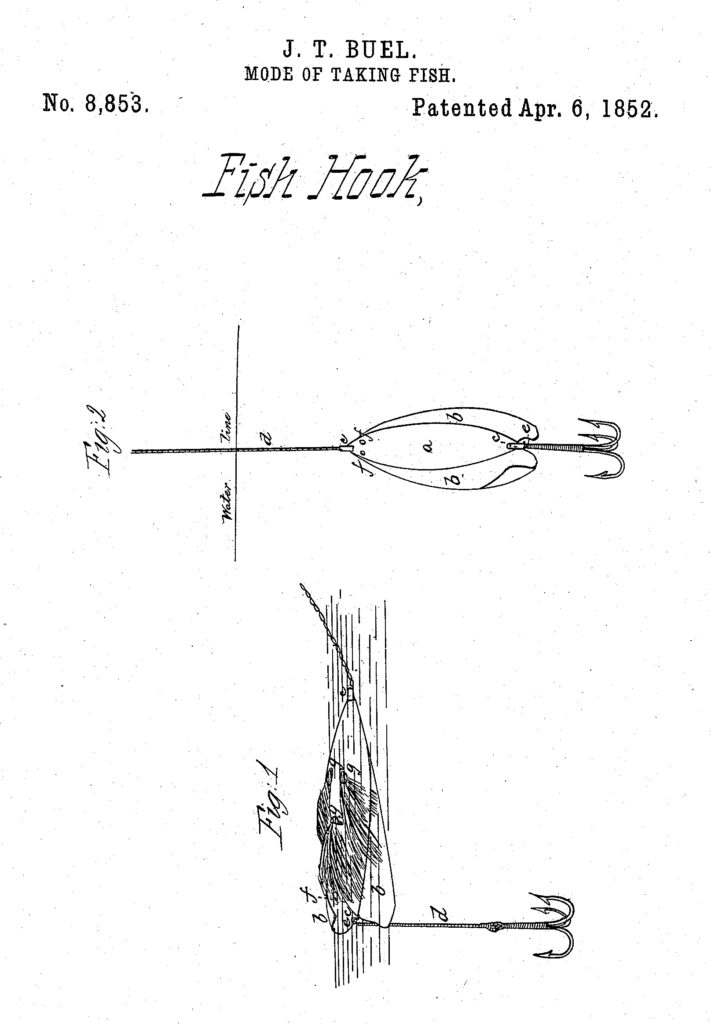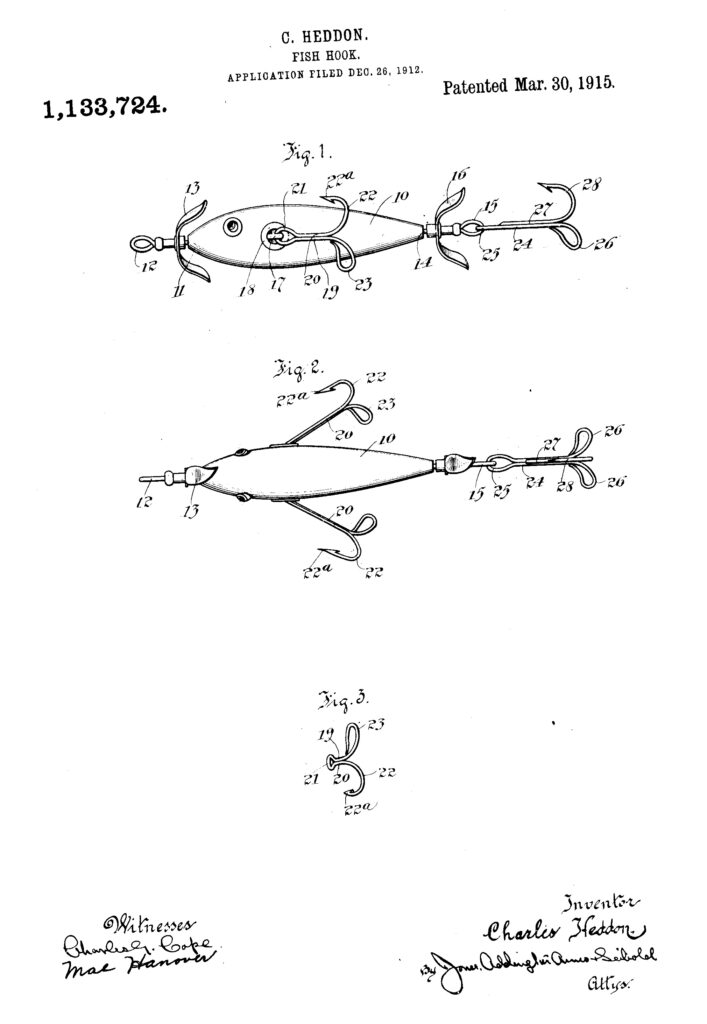
When you look at the wide selection of bass lures available today, it’s fascinating to look back at where it all started. In most cases it’s interesting just how little the the modern designs have actually changed from antique lures. Over the many years, anglers have tried to build a “better mousetrap” but the overall designs haven’t strayed too far.
Although these older lures will still catch bass today, they are treated more as collectors items now. And depending on their condition, can be pretty valuable, especially if they are still in the packaging.
History of Bass Fishing Lures
Evidence of the use of fishing lures goes back a long way, but probably the oldest manufactured fishing lure was the Phantom Minnow, sometimes called the False Minnow. This lure was made in England and made its way to America in the early 1800’s.
By the mid 1800’s we started seeing US Patents on lures made in America. These mostly consisted of different kinds of spoons. Credit for the first spoon was given to J.T. Buel with US Patent 8853.
It wasn’t until the late 1800’s that we began to see new innovations in lure design. It’s unknown who was first to manufacture “plugs” as we know them today, but one of them was James Heddon. Around that time James was whittling lures for himself and friends. Then in 1901 he founded Heddon and Sons Tackle Company.
By 1920 there were six companies doing the majority of the manufacturing in the United States. What’s interesting, but understandable, is they were all located around the Great Lakes. Some of the names you might recognize today. Here is the list of companies, known as “The Big Six.”
- Heddon – Dowagiac, MI
- Pflueger – Akron, OH
- Shakespeare – Kalamazoo, MI
- South Bend – South Bend, IN
- Paw Paw Bait – Paw Paw, MI
- Creek Chub Bait – Garrett, IN
Lure manufacturing really ramped up after 1920. Early artificial lures were made out of wood and metal, that is until World War II began. During the war there was shortage of metal and bait companies couldn’t make baits.
It was right after the war ended that baits were back in production. Not only because of the restored metal supply, but the abundance of labor that was now back in the United States.
Over the years companies eventually started making them out of plastic. However it took some time for the quality of plastic to get good. Some of the really early plastic baits if found now are mostly disintegrated.
Antique and Vintage Lure Value
Determining the value of a vintage lure comes down to its age and condition. Because lures take so much abuse, it’s rare to find a used antique lure that’s in good condition.
A lot of times these lures would be stored in tackle boxes with rubber worms. The problem with this is after some time the rubber worms will start to adhere to the lures. This fusion destroys the finish on the lure. Collectors refer to this kind of damage as “worm burns.”
There are so many vintage and antique bass lures to explore. A great resource for doing so is this book.




